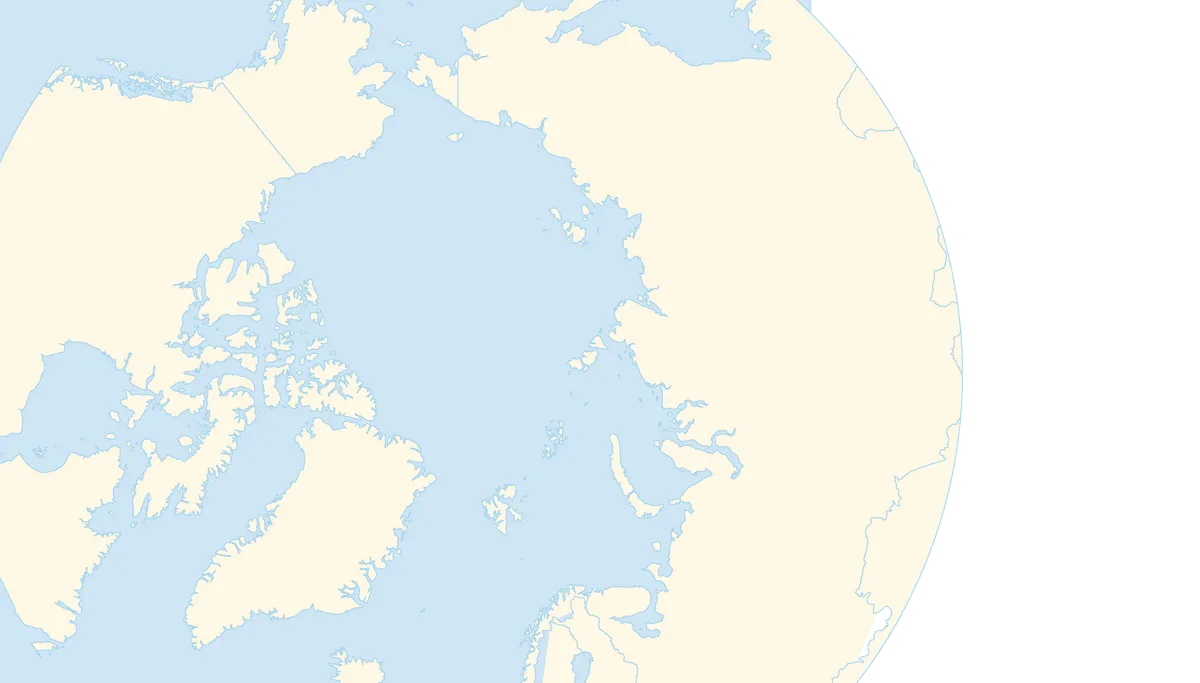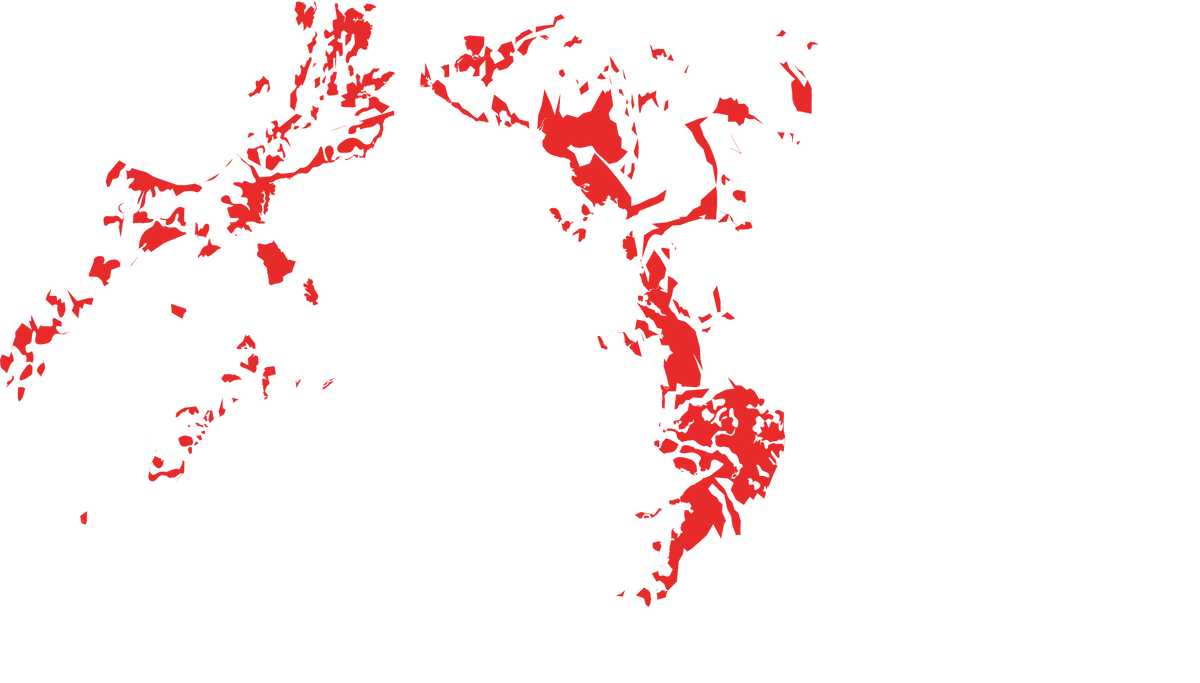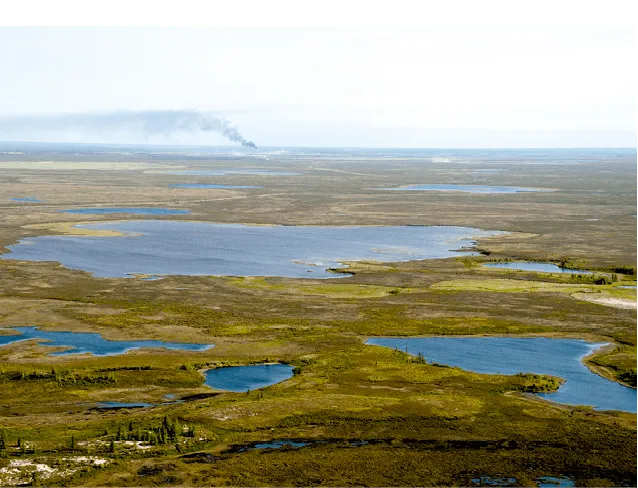Chapitre 2
Exercices
Le coin des experts
Ressource affichée de l'autre côté.
Faites défiler pour voir la suite.
Faites défiler pour voir la suite.
12 Variation passée du niveau marin
✔ Estimer la variation du volume de l'océan associée à une variation de température donnée
De nombreux indices permettent de reconstituer le rivage des côtes passées et donc d'estimer la variation du niveau des océans. Lors de la dernière glaciation, ou moment du maximum glaciaire, on estime que la température moyenne de surface était inférieure de 6 °C par rapport aux températures actuelles.
Doc.
Reconstitution de la variation du niveau marin depuis le dernier maximum glaciaire.

Données
- Rayon de la Terre : 6371 km
- Coefficient de dilatation thermique de l'eau :
α_{eau} = 2{,}6 \times 10^{-4} °C-1
2. Calculer l'ordre de grandeur de la variation du niveau marin par contraction thermique lors du dernier maximum glaciaire. Considérer que seuls les mille premiers mètres d'eau sont affectés. Comparer ce résultat aux données du document.
3. En considérant que les océans recouvrent 70 % de la surface du globe, calculer le volume d'eau piégé dans les glaces lors du dernier maximum glaciaire.
Ressource affichée de l'autre côté.
Faites défiler pour voir la suite.
Faites défiler pour voir la suite.
13Variation du dioxyde de carbone à l'échelle des temps géologiques
✔ Analyser les variations au cours du temps de certaines grandeurs
Comprendre le climat présent et modéliser le climat futur nécessite de mieux comprendre les climats du passé. Des études complexes ont permis d'estimer les concentrations atmosphériques en \text{CO}_2 depuis 600 millions d'années.
Doc. 1
Variation des teneurs atmosphériques en \text{CO}_2 depuis 600 millions d'années.

Le \text{RCO}_2 est le rapport entre la teneur en \text{CO}_2 à une période donnée et la valeur préindustrielle de 300 ppm. La zone colorée correspond aux incertitudes sur la valeur déterminée (Pangée : supercontinent du Carbonifère) contenant de nombreuses chaînes de montagne.
Doc. 2
Quelques réactions biogéochimiques du cycle du carbone.
Le carbone transite entre différents réservoirs présents sur Terre au moyen de réactions chimiques.
Réactions géochimiques : les roches continentales s'altèrent, notamment au contact de l'eau. Les silicates (minéraux des roches) réagissent ainsi :
\text{CO}_2 + \text{CaSiO}_3 \rightleftarrows \text{CaCO}_3 + \text{SiO}_2
\text{CO}_2 + \text{MgSiO}_3 \rightleftarrows\text{MgCO}_3 + \text{SiO}_2
\text{CO}_2 + \text{CaCO}_3 + \text{H}_2\text{O}\rightleftarrows2\ \text{HCO}^{-}_3 + \text{Ca}^{2+}
\text{CO}_2 + \text{MgSiO}_3 \rightleftarrows\text{MgCO}_3 + \text{SiO}_2
\text{CO}_2 + \text{CaCO}_3 + \text{H}_2\text{O}\rightleftarrows2\ \text{HCO}^{-}_3 + \text{Ca}^{2+}
Équations-bilan de réactions biologiques :
-
❯
respiration cellulaire : \text{C}_6\text{H}_{12}\text{O}_6 + \text{O}_2\longrightarrow\ 6\ \text{CO}_2 + 6\ \text{H}_2\text{O}
❯ photosynthèse : 6\ \text{H}_2\text{O} + 6\ \text{CO}_2\longrightarrow6\ \text{O}_2 + \text{C}_6\text{H}_{12}\text{O}_6
Ressource affichée de l'autre côté.
Faites défiler pour voir la suite.
Faites défiler pour voir la suite.
COcéan et réchauffement climatique
✔ Identifier les relations de causalité qui sous-tendent la dynamique d'un système
.
L'océan est un système complexe qui interagit avec les autres enveloppes terrestres. En plus des transferts d'énergie, des transferts de matière ont lieu entre les différents réservoirs terrestres.

 Source : Lucchetti Aurélie, thèse, 2014.
Doc 1 et doc 2, Expliquer un rôle de l'océan sur le réchauffement climatique.
Source : Lucchetti Aurélie, thèse, 2014.
Doc 1 et doc 2, Expliquer un rôle de l'océan sur le réchauffement climatique.
.
L'océan est un système complexe qui interagit avec les autres enveloppes terrestres. En plus des transferts d'énergie, des transferts de matière ont lieu entre les différents réservoirs terrestres.
Doc. 1
Variation du pH des océans et de la teneur en dioxyde de carbone atmosphérique.

Doc. 2
Proportion en \text{CO}_2, \text{CO}^{2-}_3 et \text{HCO}^{-}_3 en fonction du pH.

Ressource complémentaire
Pour retrouver plus d'informations sur
Ressource affichée de l'autre côté.
Faites défiler pour voir la suite.
Faites défiler pour voir la suite.
DPermafrost et climat
✔ Identifier les relations de causalité qui sous-tendent la dynamique d'un système
.
Pour chaque site, la température a été prise à une profondeur où elle est constante toute l'année.

Dans l'atmosphère, le méthane est assez rapidement converti en dioxyde de carbone.
Le réchauffement du permafrost entraîne le réveil des microorganismes qui consomment alors la matière organique du sol :












.
Doc. 1
Température du sol dans différents sites au sein du permafrost.Pour chaque site, la température a été prise à une profondeur où elle est constante toute l'année.

Doc. 2
Métabolisme de quelques microorganismes vivant dans les sols.Dans l'atmosphère, le méthane est assez rapidement converti en dioxyde de carbone.
Le réchauffement du permafrost entraîne le réveil des microorganismes qui consomment alors la matière organique du sol :
- équation-bilan de la respiration cellulaire :
\text{C}_{6}\text{H}_{12}\text{O}_{6}\;{+}\;{6}\;\text{O}_{2}\longrightarrow{6}\;\text{CO}_{2}{+} \;{6}\;\text{H}_{2}\text{O} - la méthanogenèse aboutit à la production de méthane à partir de matière organique (chaque atome de carbone aboutit à la formation d'une molécule de méthane).
Doc. 3
Richesse en carbone dans les sols où le permafrost fond.
Cliquez sur un élément de légende ou un titre pour l'afficher ou le masquer










Doc.
La fonte du permafrost.


Données
- Masse molaire du carbone : M\text{(C)} = 12 g⋅mol-1
- Masse molaire de l'oxygène : M\text{(O)} = 16 g⋅mol-1
Une erreur sur la page ? Une idée à proposer ?
Nos manuels sont collaboratifs, n'hésitez pas à nous en faire part.
j'ai une idée !
Oups, une coquille
